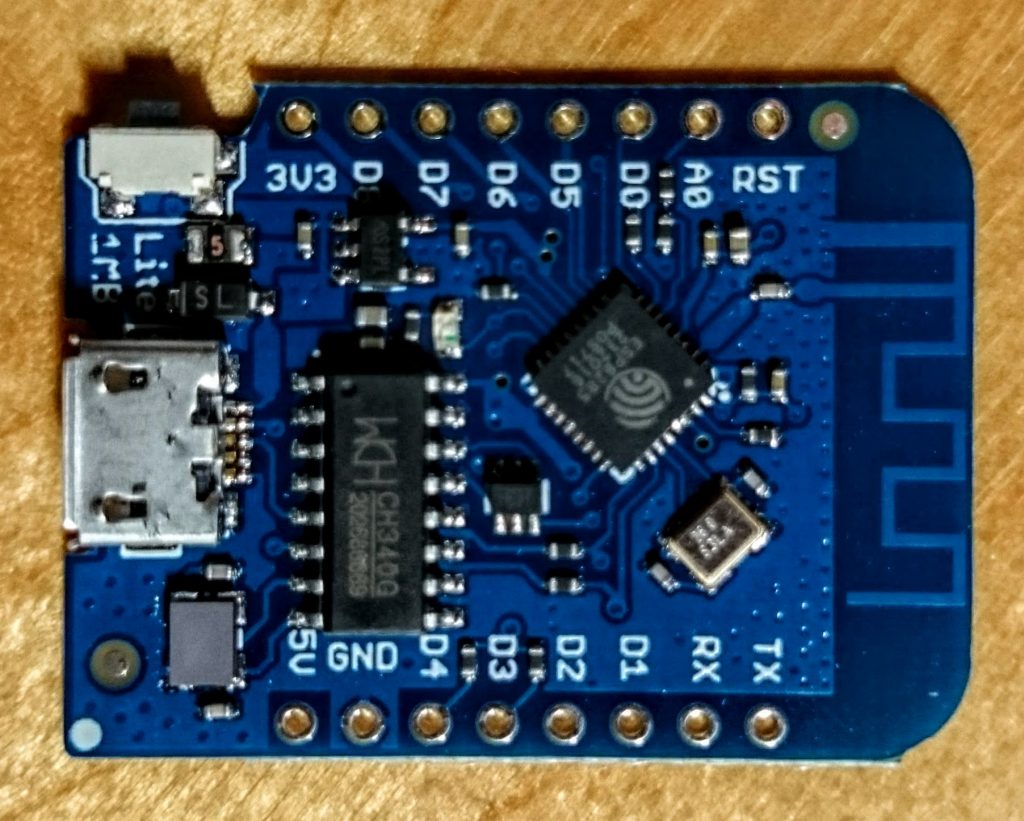To program the ESP32 is usually a bit of luck and sometimes pressing the reset button if you’re less lucky.
RTS and/or DTR should be able to reset the ESP32. Once it’s reliably reset, a download via netcat works. If I only had a program to reset RTS and/or DTR!
I found one here, changed it to toggle DTR instead of RTS as toggling RTS did not do anything. Now I can reset the ESP32 reliably. Full automation is achieved!
Here the DTR toggle program:
#include <stdio.h>
#include <stdlib.h>
#include <termios.h>
#include <unistd.h>
#include <sys/ioctl.h>
#include <sys/types.h>
#include <sys/stat.h>
#include <fcntl.h>
static struct termios oldterminfo;
void closeserial(int fd)
{
tcsetattr(fd, TCSANOW, &oldterminfo);
if (close(fd) < 0)
perror("closeserial()");
}
int openserial(char *devicename)
{
int fd;
struct termios attr;
if ((fd = open(devicename, O_RDWR)) == -1) {
perror("openserial(): open()");
return 0;
}
if (tcgetattr(fd, &oldterminfo) == -1) {
perror("openserial(): tcgetattr()");
return 0;
}
attr = oldterminfo;
attr.c_cflag |= CRTSCTS | CLOCAL;
attr.c_oflag = 0;
if (tcflush(fd, TCIOFLUSH) == -1) {
perror("openserial(): tcflush()");
return 0;
}
if (tcsetattr(fd, TCSANOW, &attr) == -1) {
perror("initserial(): tcsetattr()");
return 0;
}
return fd;
}
int setSerial(int fd, int bitmask, int level)
{
int status;
if (ioctl(fd, TIOCMGET, &status) == -1) {
perror("setSerial(): TIOCMGET");
return 0;
}
if (level)
status |= bitmask;
else
status &= ~bitmask;
if (ioctl(fd, TIOCMSET, &status) == -1) {
perror("setSerial(): TIOCMSET");
return 0;
}
return 1;
}
int main(int argc, char *argv[])
{
int fd;
char *serialdev = "/dev/ttyUSB0";
int bitmask;
if (argc == 2) {
serialdev = argv[1];
}
// printf("device: %s\n", serialdev);
fd = openserial(serialdev);
if (!fd) {
fprintf(stderr, "Error while initializing %s.\n", serialdev);
return 1;
}
bitmask = TIOCM_DTR; // alternatively TIOCM_RTS | TIOCM_DTR
setSerial(fd, bitmask, 0);
sleep(1); /* pause 1 second */
setSerial(fd, bitmask, 1);
closeserial(fd);
return 0;
}
And the program to upload to the ESP (via netcat):
#!/bin/bash # # Upload JS file to ESP32 via wifi # # Usage: # uploadesp.sh JAVASCRIPTFILE IPADDRESS if [[ $# -ne 2 ]] ; then echo "Usage: $0 JAVASCRIPTFILE IPADDRESS" exit 20 fi if [[ ! -f "$1" ]] ; then echo "ERROR: Cannot read file \"$1\"" exit 10 fi dtr-toggle TMP="$(mktemp).js" espruino -n -o $TMP $1 echo "Uploading to $2:23" nc $2 23 < $TMP >/dev/null # rm $TMP exit 0
